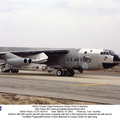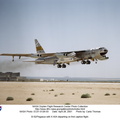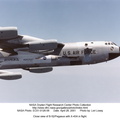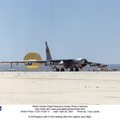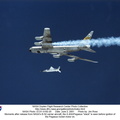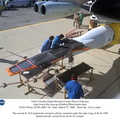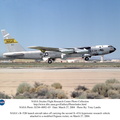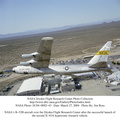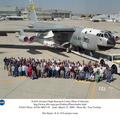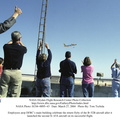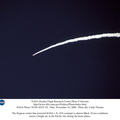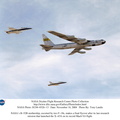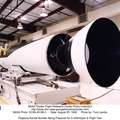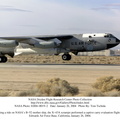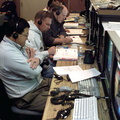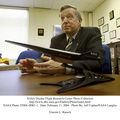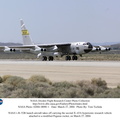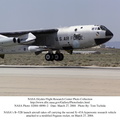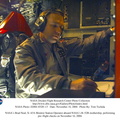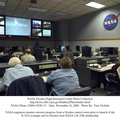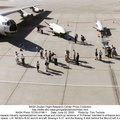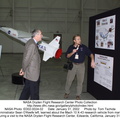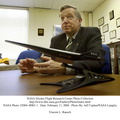
WIKIARCHIVES.SPACE
The Human Spaceflight Archive

Information
- Taken in
- Edwards Air Force Base
- Autor
- NASA/Tom Tschida
- Opis
- The X-43A hypersonic research aircraft and its modified Pegasus� booster rocket are nestled under the wing of NASA's NB-52B carrier aircraft during pre-flight systems testing at the Dryden Flight Research Center, Edwards, Calif. The combined systems test was one of the last major milestones in the Hyper-X research program before the first X-43A flight. The X-43A flights will be the first actual flight tests of an aircraft powered by a revolutionary supersonic-combustion ramjet ("scramjet") engine capable of operating at hypersonic speeds (above Mach 5, or five times the speed of sound). The 12-foot, unpiloted research vehicle was developed and built by MicroCraft Inc., Tullahoma, Tenn., under NASA contract. The booster was built by Orbital Sciences Corp., Dulles, Va. After being air-launched from NASA's venerable NB-52 mothership, the booster will accelerate the X-43A to test speed and altitude. The X-43A will then separate from the rocket and fly a pre-programmed trajectory, conducting aerodynamic and propulsion experiments until it descends into the Pacific Ocean. Three research flights are planned, two at Mach 7 and one at Mach 10.
- Napravljen na
- Četvrtak 15 Mart 2001
- Kategorije
- US SPACE PROGRAM / AERONAUTICS RESEARCH / X-43
- Source link
- https://www.dfrc.nasa.gov/Gallery/index.html
- Poseta
- 14
- Rezultat ocenjivanja
- bez ocene
- Oceni ovu sliku
- License
- Public Domain
- Modified by WikiArchives
- No (original)
- Preuzimanja
- 1
Urađeno u Piwigo













